

Discover more from Easy By Nature
The public elementary school in our neighborhood has become the site of a grand experiment. Sixteen acres of land around the school have been transformed into a natural playground. The once flat land covered in mowed grass is now riotous with life. Winding paths traverse diverse tree, shrub, and prairie plantings that shelter varied play areas made with natural materials. The project is the vision of former Colene Hoose elementary student Charlie Jobson, who funded the project. Charlie brought in world-renowned Danish landscape architect Helle Nebelong for the design and Canadian Adam Bienenstock of the Bienenstock Natural Playground company for coordination, fabrication, and construction. This mix of people and world views has been a breath of fresh air for our community. The playground is quickly becoming a major attraction for people and birds in our region.
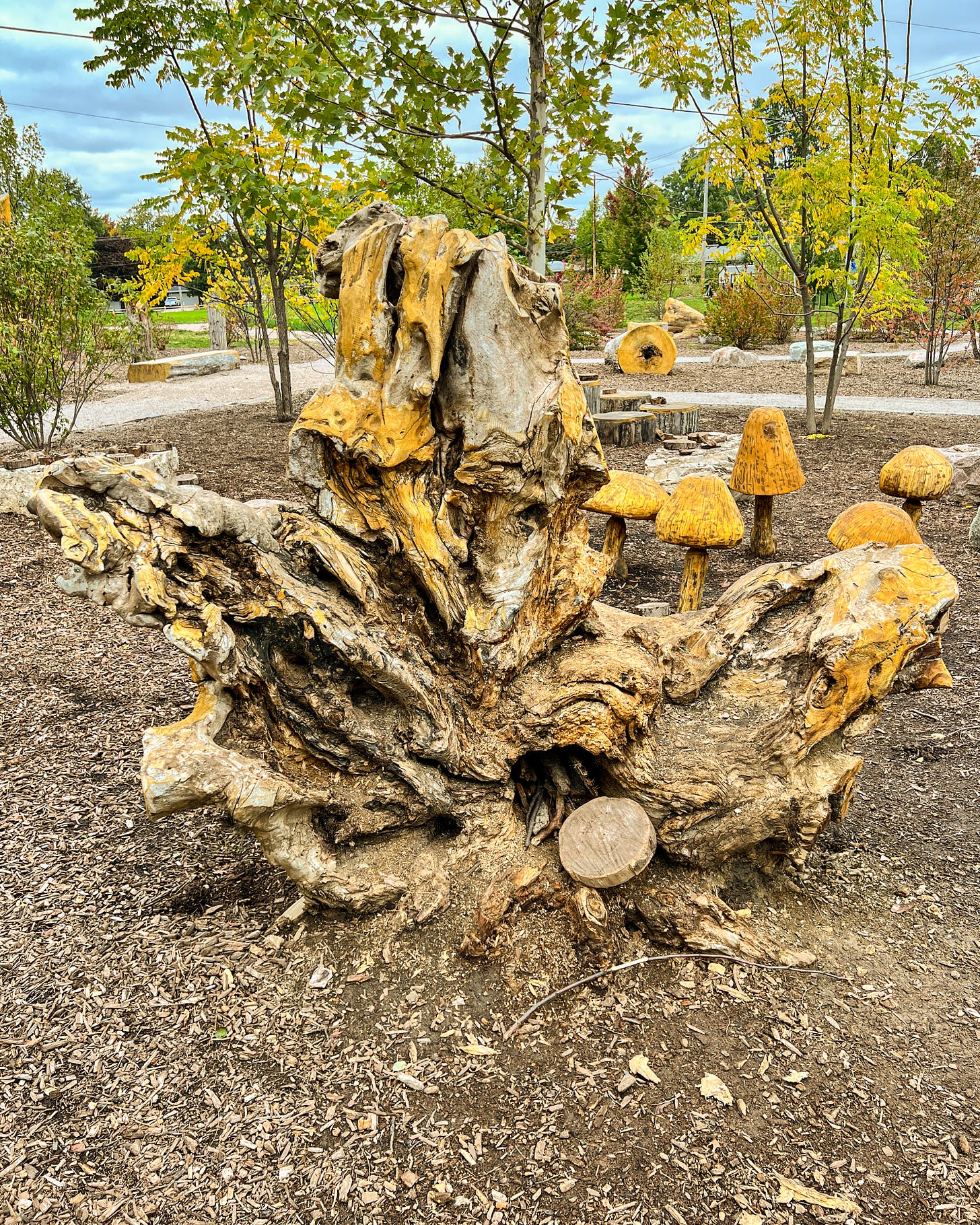
The prairie wind inhabits this site; it flows unimpeded from every direction. Past generations knew the sights and subtle sounds of wind in the prairie, and now the rustle and graceful swaying of the prairie will inhabit the imagination of a new generation of children. The prairie will teach them to put down roots, go with the flow, and bend without breaking. The beauty of the prairie is enhanced by the playground’s lovely aesthetic sensibility that embraces curved lines, ancient stones, trees, slopes, and water that, taken as a whole, will shape young minds. Our kids deserve to experience beauty; they need it, and their lives are richer and more meaningful as a result.

Having kids experience the prairie may prompt them to ask what 100 acres of prairie would look like or, better yet, 1,000 acres or an entire landscape. What does the wind look like coursing across a golden landscape covered in native prairie? How does it move you? Why is it gone? Where can you still see a prairie sky with the cumulonimbus rolling by? These are useful questions.
This project is already wildly successful. I have seen children chasing butterflies and heard unbridled enthusiasm as they explored, built forts and sang into little tunnels and cavities in the ground. These openings into the earth lie outside the realm of most adults. One girl crouched down and whispered into the cavity words only she could hear. Perhaps she was serenading the tree roots, sending positive vibrations into the soil and deepening her connection to this place. Hidden springs of vitality and curiosity will bubble up in response to her song. Her voice now resides in the soil. She has put down roots in solidarity with the young trees.
This connection will help stem the tide of mechanistic thinking that teaches us that our value is tied to our productivity. Rather, we are all children of the cosmos with inherent value.
We all have a right to reflect on ourselves and maintain our interior life. All of us should have the opportunity to experience more than gray commercial landscapes devoted to money. This playground is a scaffolding for outdoor experiences. If we are honest with ourselves, we would think of this playground as a sanityground. A place where people can feel sane. It is an antidote to our dysfunctional culture and fixation on screens and virtual experiences. Our kids need this sanity. For every hour spent looking at a screen, we should make sure they spend some amount of time outdoors regaining the sanity that our devices drain away. The antidote to what ails us is to commune with nature.
Getting kids outside, engaged, and active opens them up to new possibilities. Nature is the star of the show. The birds, butterflies, flowers, and mammals are captivating forms of sentience that draw kids in. They will learn that the plants and animals are our teachers. They know more than us.
I have watched kids watch Canada geese. The geese are wary, intelligent, talkative, and constantly communicating verbally and physically (much like children themselves). The kids see the geese seeing them. They are both watching and reacting to each other’s presence. This dance draws them into a relationship with the playground and its inhabitants.
Kids lead the way, and our community follows. Many people visit the playground and are immediately drawn to the intricate and varied play structures. These natural creations provide meaningful opportunities for play for kids of all inclinations, interests, and abilities. Introverts are welcome here, as well as the creative kids who want to sing into the earth.
People also notice that there are a lot of plants here, and many of them are unusual. The native plants are the most sensitive part of this project; they require the most care to survive, and their existence is often tenuous in urban environments. Sharp mower blades are always at the ready, powered by gas and outdated views that value short grass above all else. Our lawns are a physical manifestation of outdated thinking and a maladaptive way of being in the world. Our urge to control our surroundings and make everything tidy and manicured is intense. It represents one of the greatest threats to the playground. Hopefully, it will prompt people to consider if we can have progress and native plants together. Our challenge is to learn to be responsible citizens of our place and expand our moral compass to embrace and appreciate lives outside of our own. We cannot stop wildness; it falls from the sky, stalks the night, and inhabits our spirit.
Fortunately, many people value diversity and a little wildness in our cities. Our local Audubon chapter and groups like the Urban Butterfly Initiative are working to help native plants thrive. We are focusing on butterflies to build support and appreciation for the native plants.
The monarchs and other butterflies represent our best hope to sustain the delicate beauty of the native plants to the fullest extent possible. The herbaceous layer is the real driver of biodiversity. The native plant communities in the prairie woodland and savanna plantings are complex, intricate, and sensitive. They require much attention and care coupled with skillful management. It is much easier to take care of concrete, gravel, and Kentucky bluegrass, but this attention to life and this caring is what we most need. It is how we connect with something larger than ourselves, something outside ourselves; this connection is precious.
The plant diversity on the playground is already attracting hundreds of birds. Members of the local Audubon chapter have submitted the first EBird checklist and requested this location be a new birding hotspot. Long-term plans also include seeking Audubon bird-friendly certification for the playground.
The school mascot is a hawk, and their motto is “We choose kindness,” so we should be able to be kind to the birds. Actual hawks have already shown up to feed on the mice hiding in the grass. They have found their place among the other little Hoose Hawks.
Will the kids care enough to protect the prairie? Will they take some seed home in their pockets and start a little prairie in their yards? This would begin the process of the prairie colonizing young minds and spreading out across the landscape. The prairie wind will whisk the seeds aloft, and those seeds will fill the sky, taking flight with the birds and settling across the landscape to reinhabit their homes. A landscape reborn through love and kindness. This landscape of our past lives in our psyche and dreams. It exerts an eternal magnetic pull on us. It will rise like smoke and permeate our lives with meaning and an authentic sense of being alive.
I’m not that lion battling an enemy.
Confronting myself keeps me busy enough
I am the soil Love seeds.
Roses and lilies bloom from this mud
I ached from separation
I cloaked myself in night
emerged the shining moon.
Consumed in Love’s fire,
I slip through any opening.
I rise like smoke.
I am a child. Love is my teacher,
Waking me from ignorance.
Like Love, I will live on
Radiant, eternal,
when eating and sleeping are done.
Till then, like Boubakr, the master musician,
I quiet my mind and listen. I fast.
In silence,
We hear body become spirit.
Rumi
Resources
If you are in the market for a natural playground check out Bienenstock Natural Playgrounds.
Last Child in the Woods is a good book for background information on the value of outdoor play.

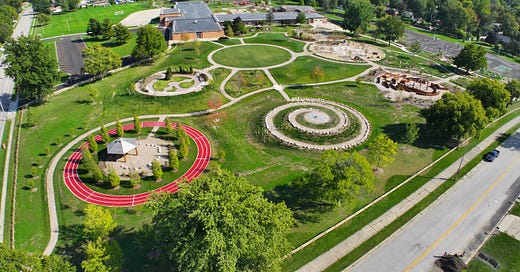



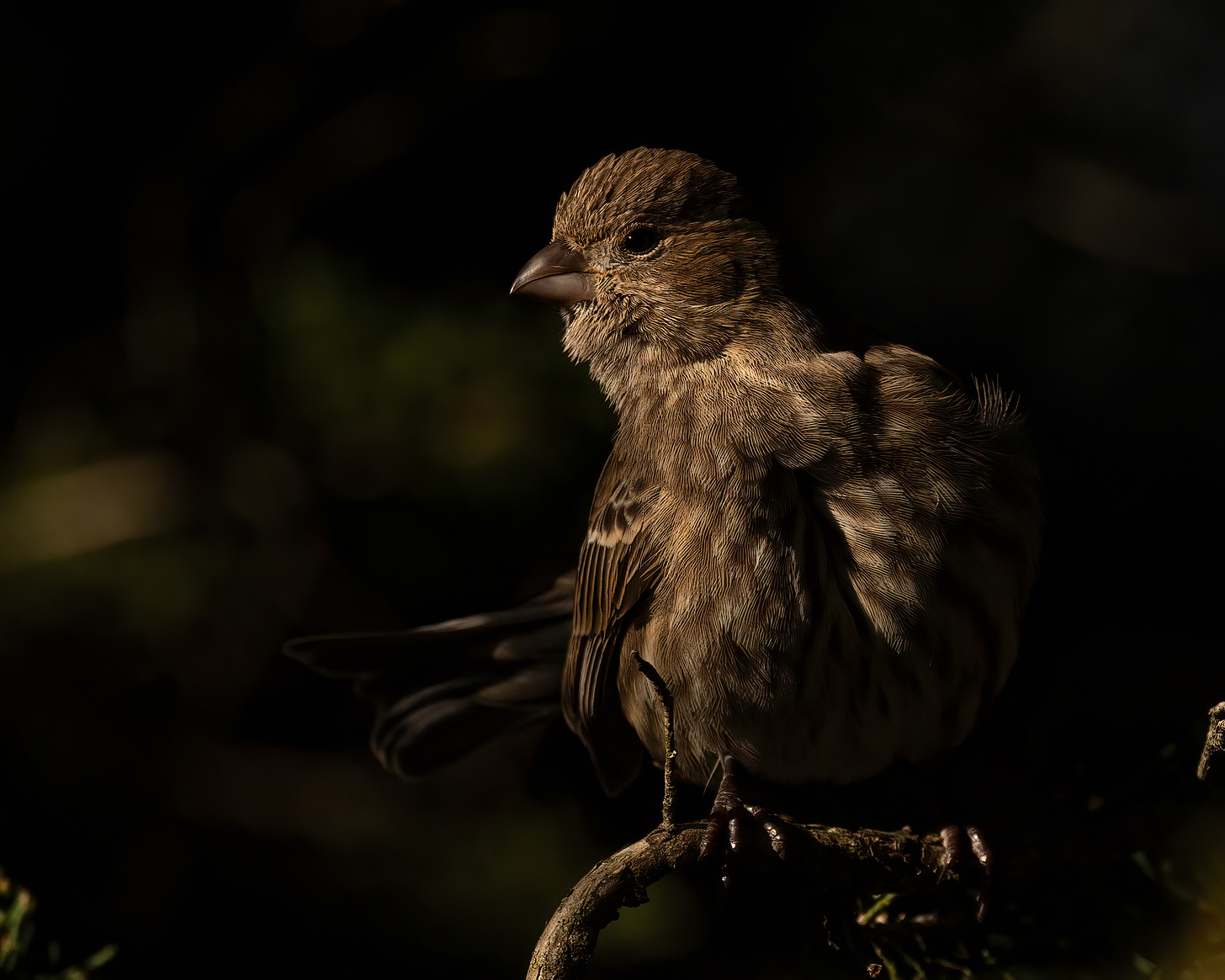
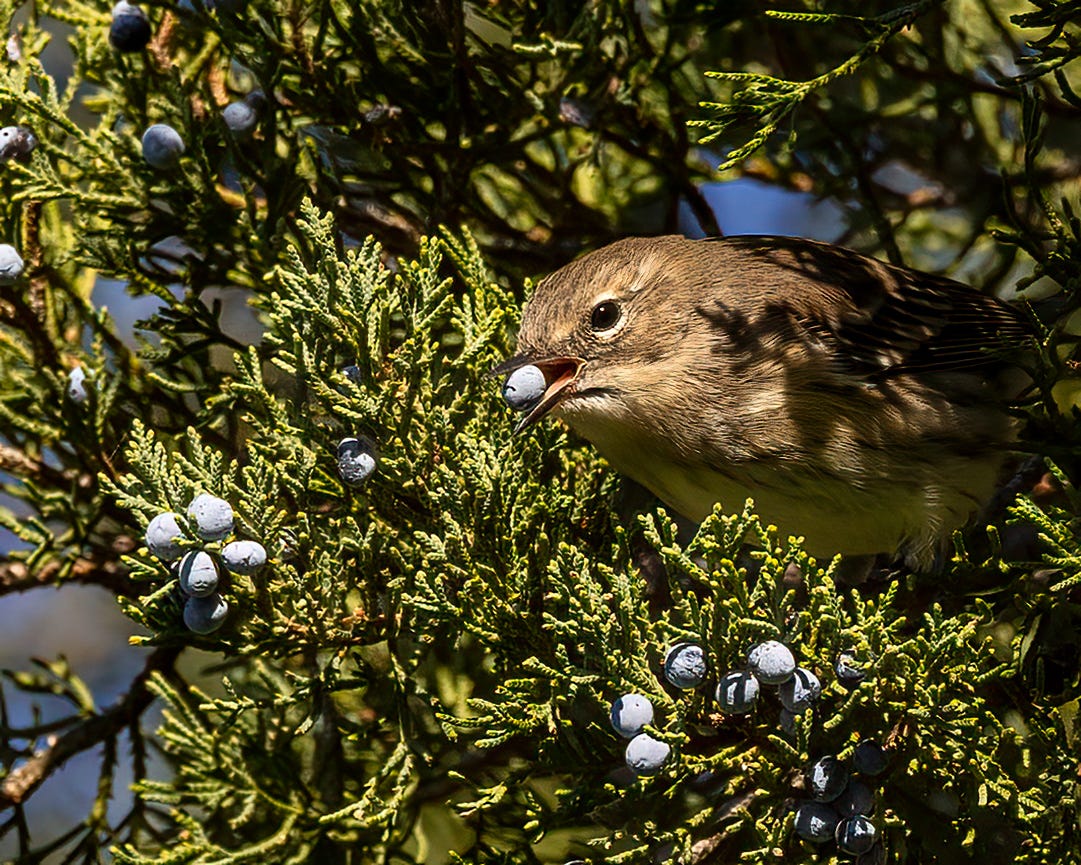
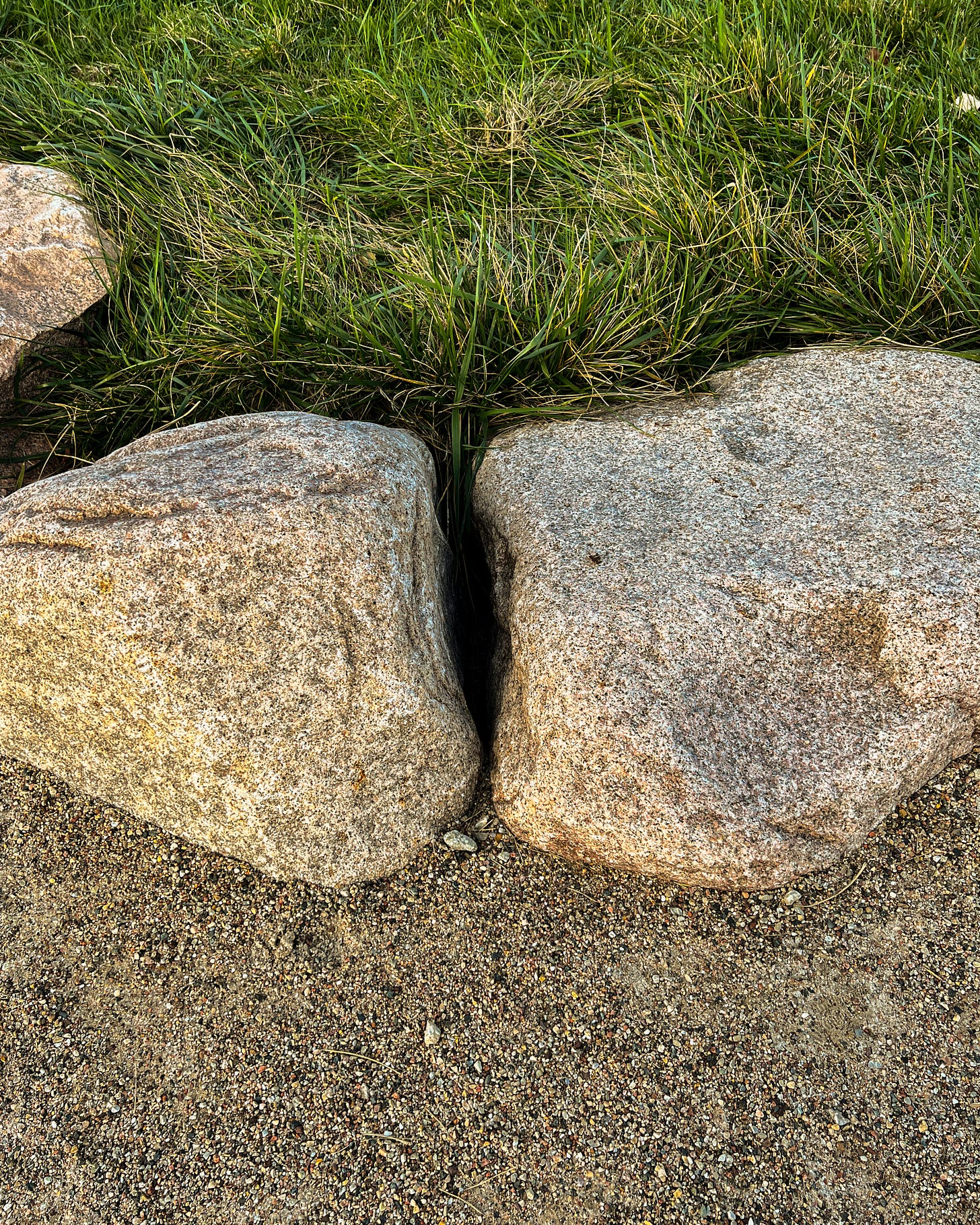
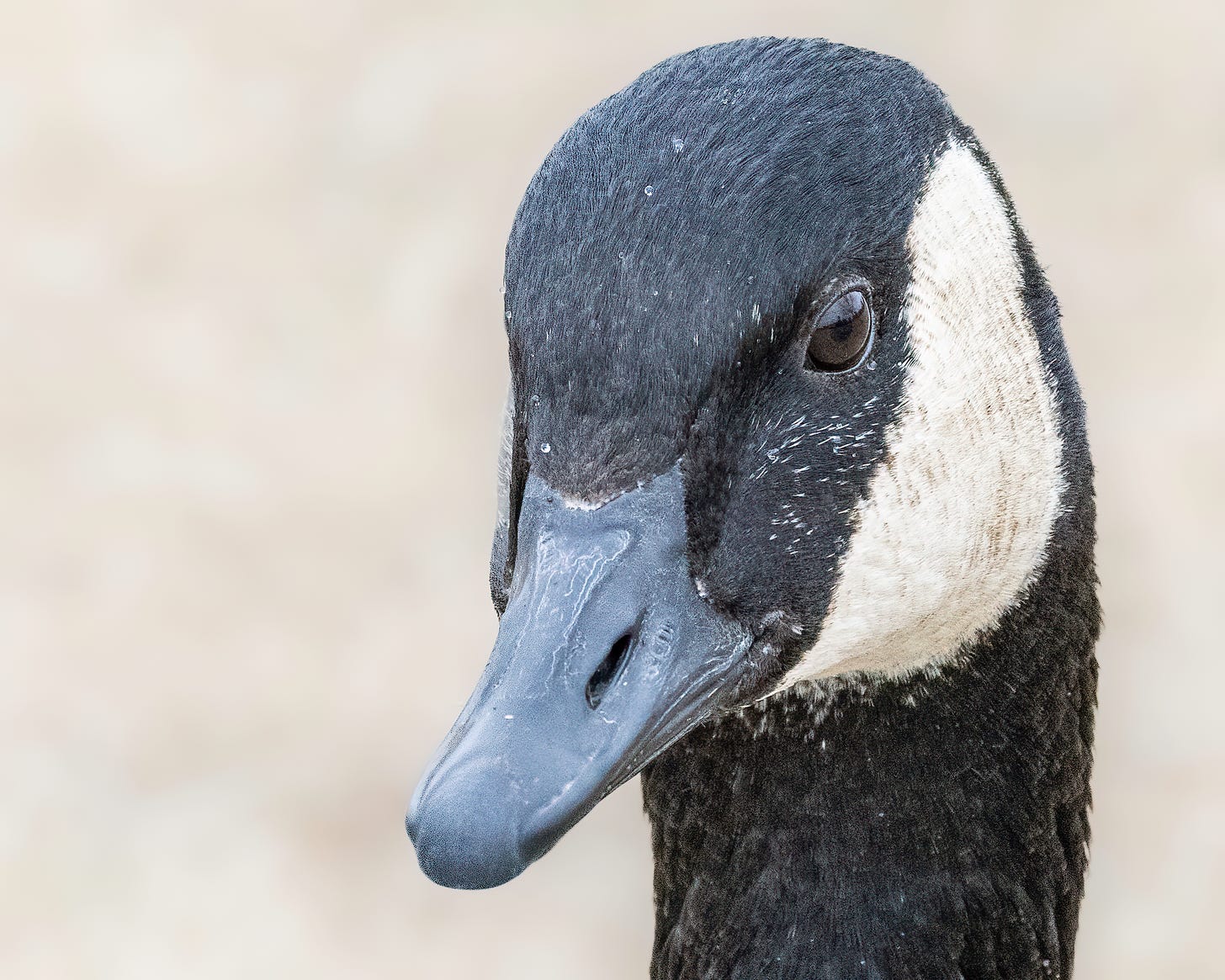
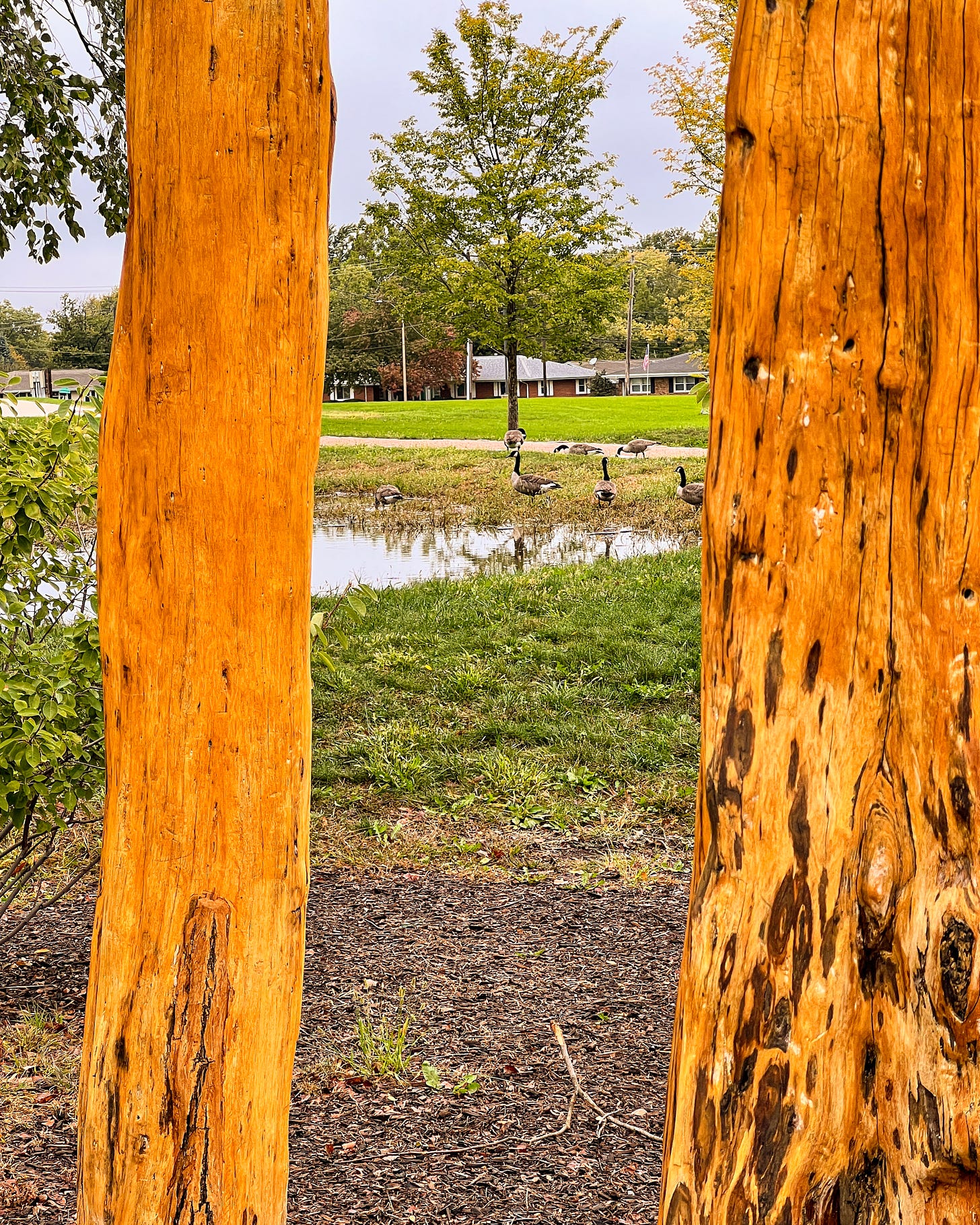
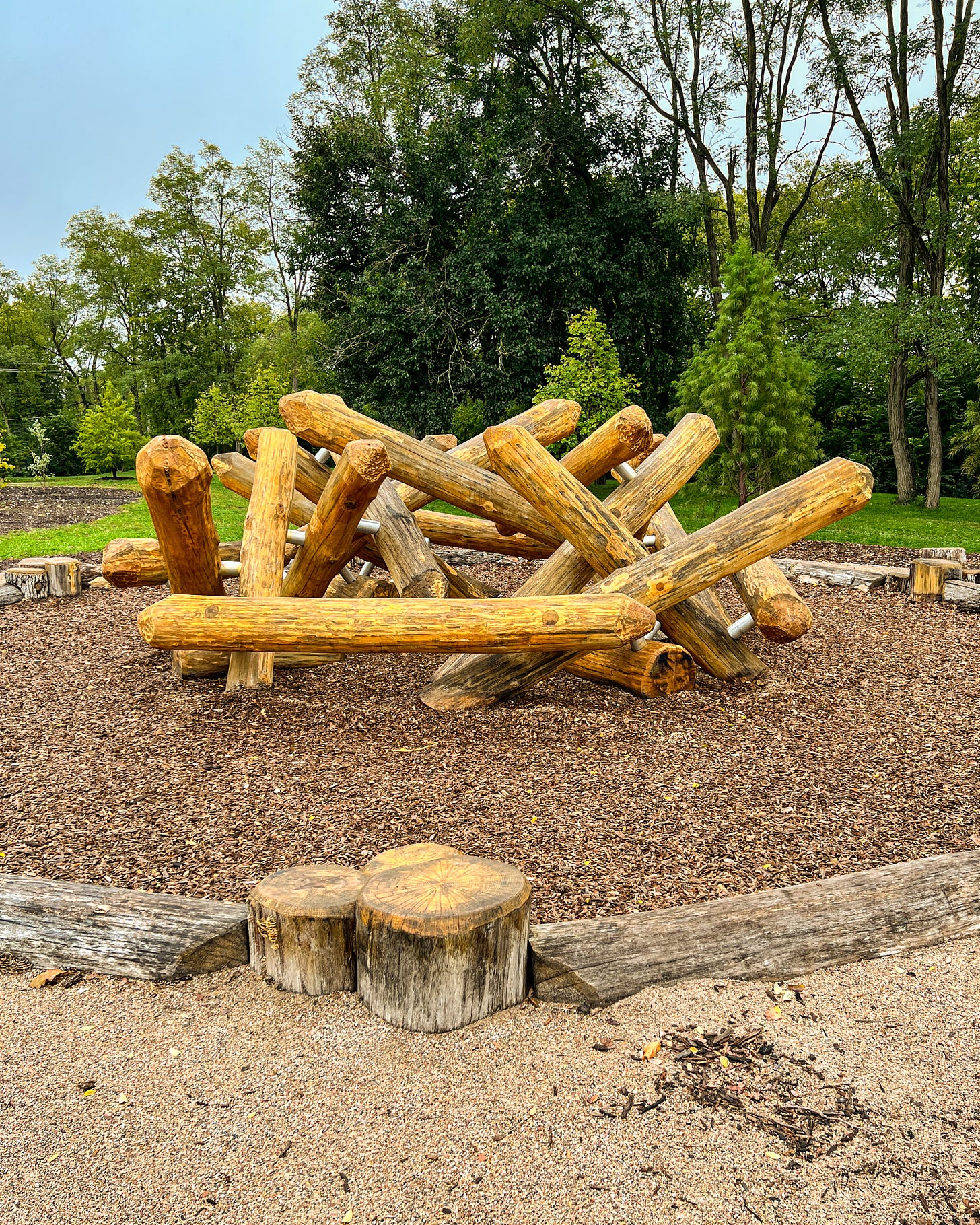
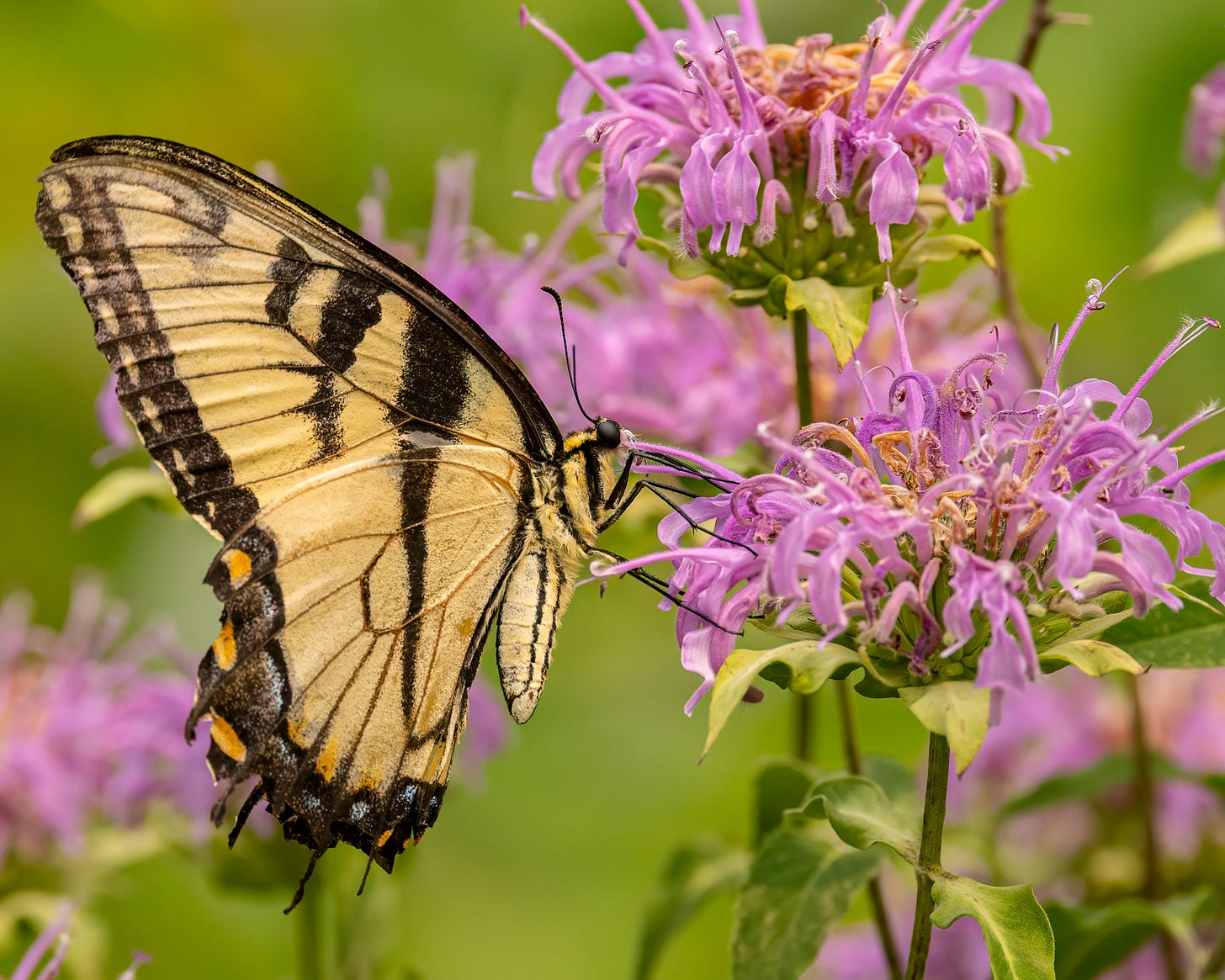
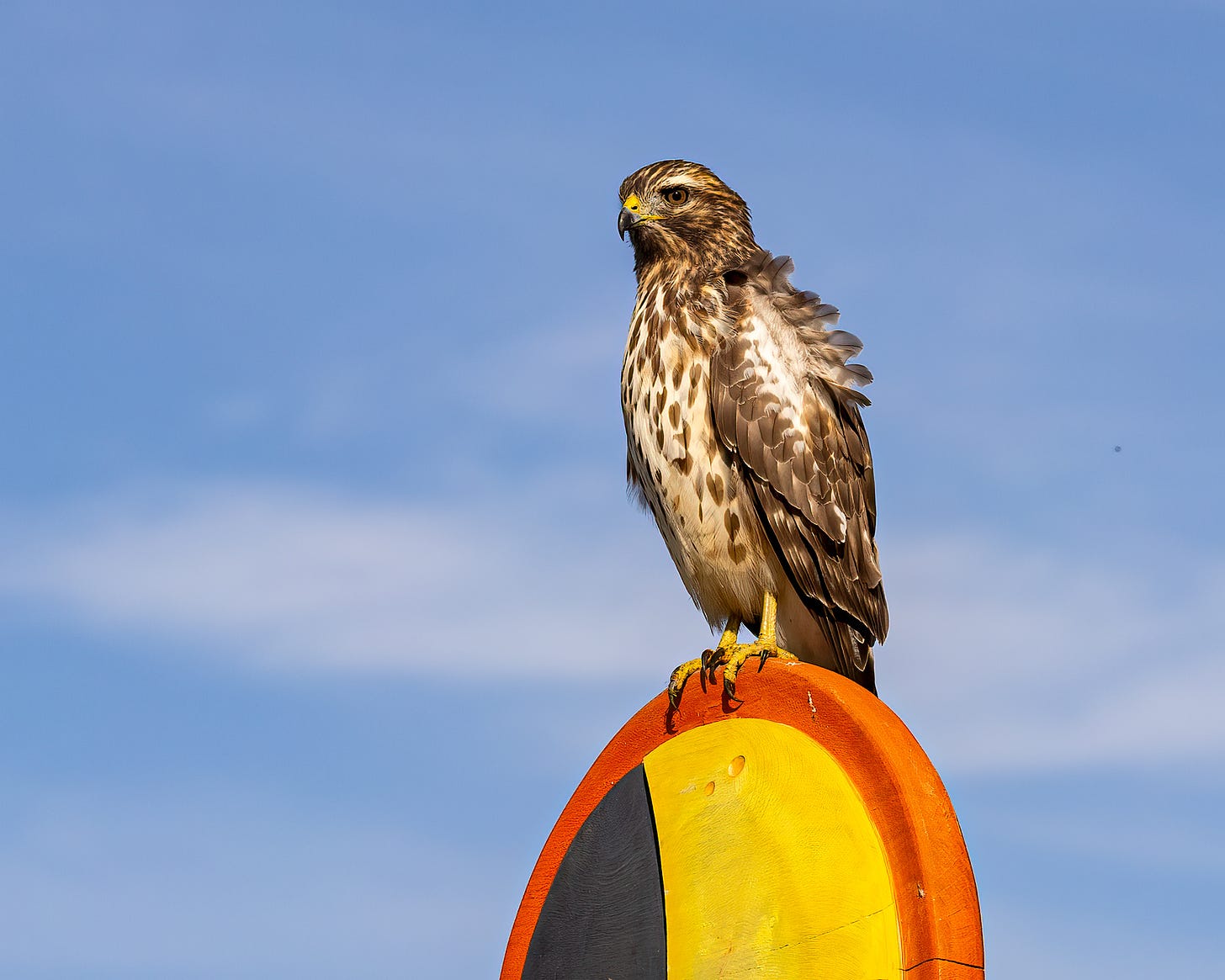
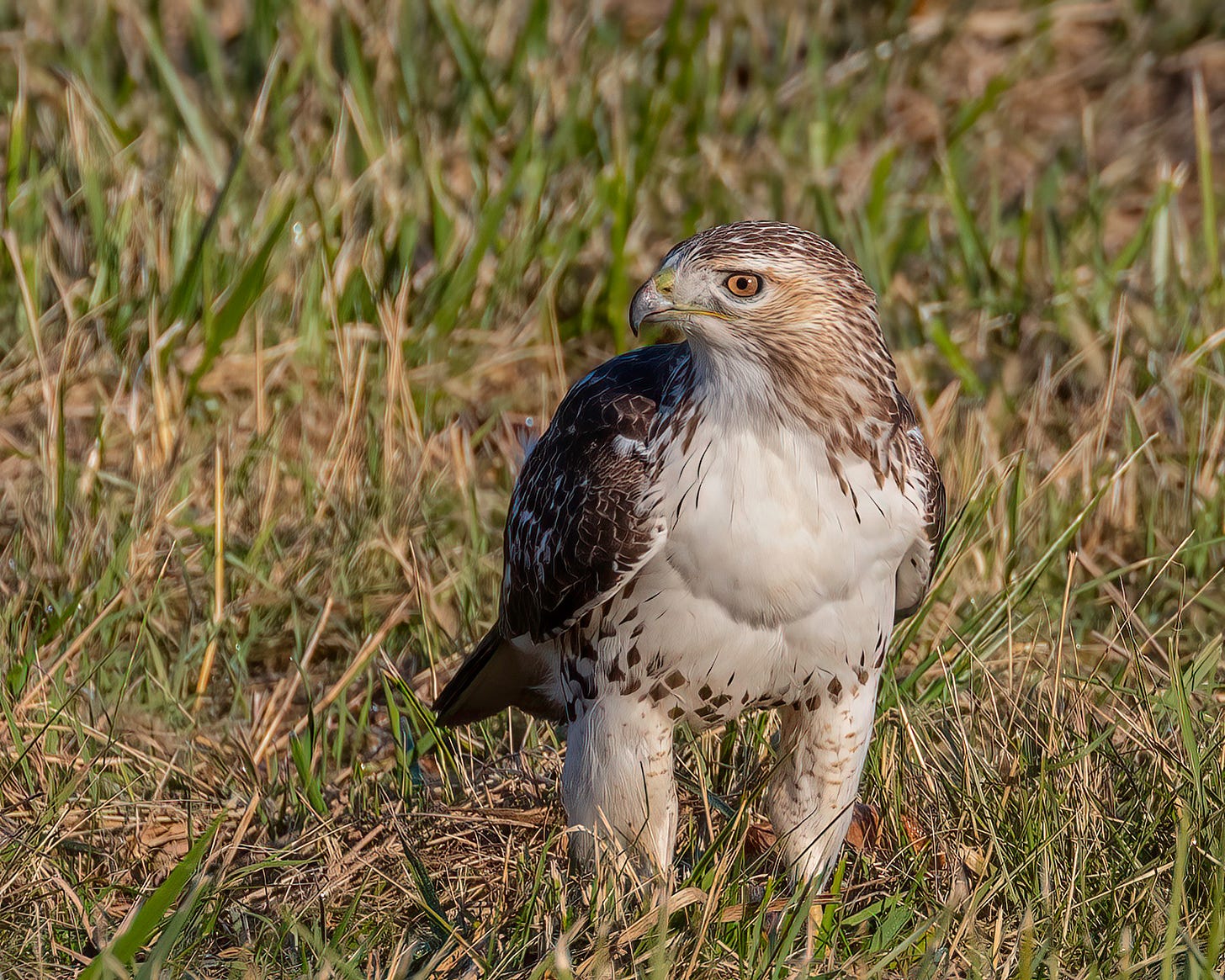





Bill, what an amazing project! Your community has made a commitment to growing young naturalists. Nature teaches so gently and gradually that the children are always learning and understanding, each at his or her own pace. A lifetime gift!🌿
What an incredible project. A nursery island in the plains. May her seeds spread far and wide, and may she inspire others to create more spaces like this as well.